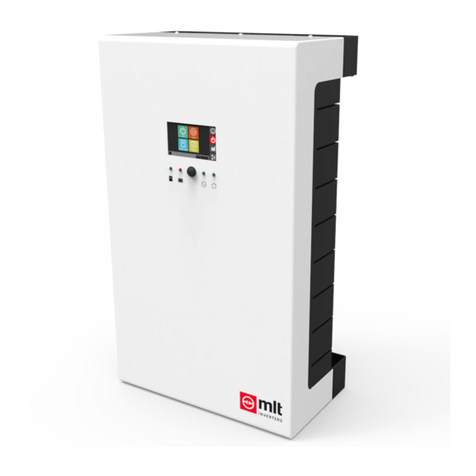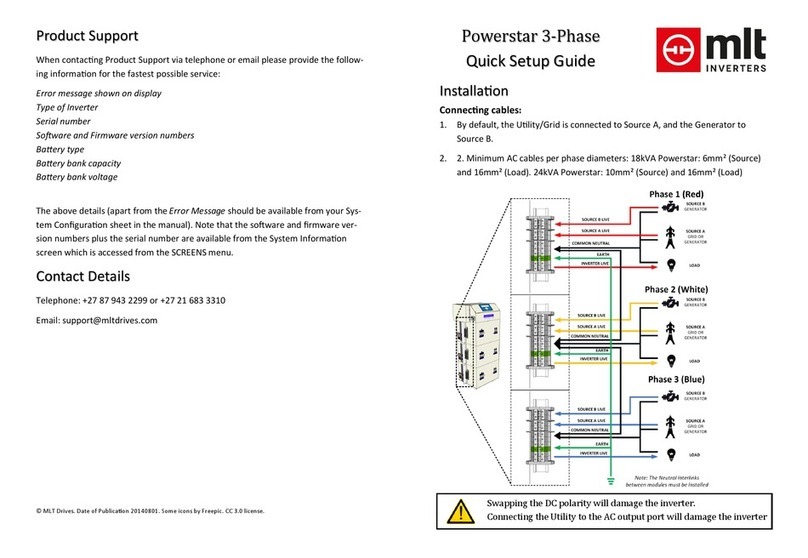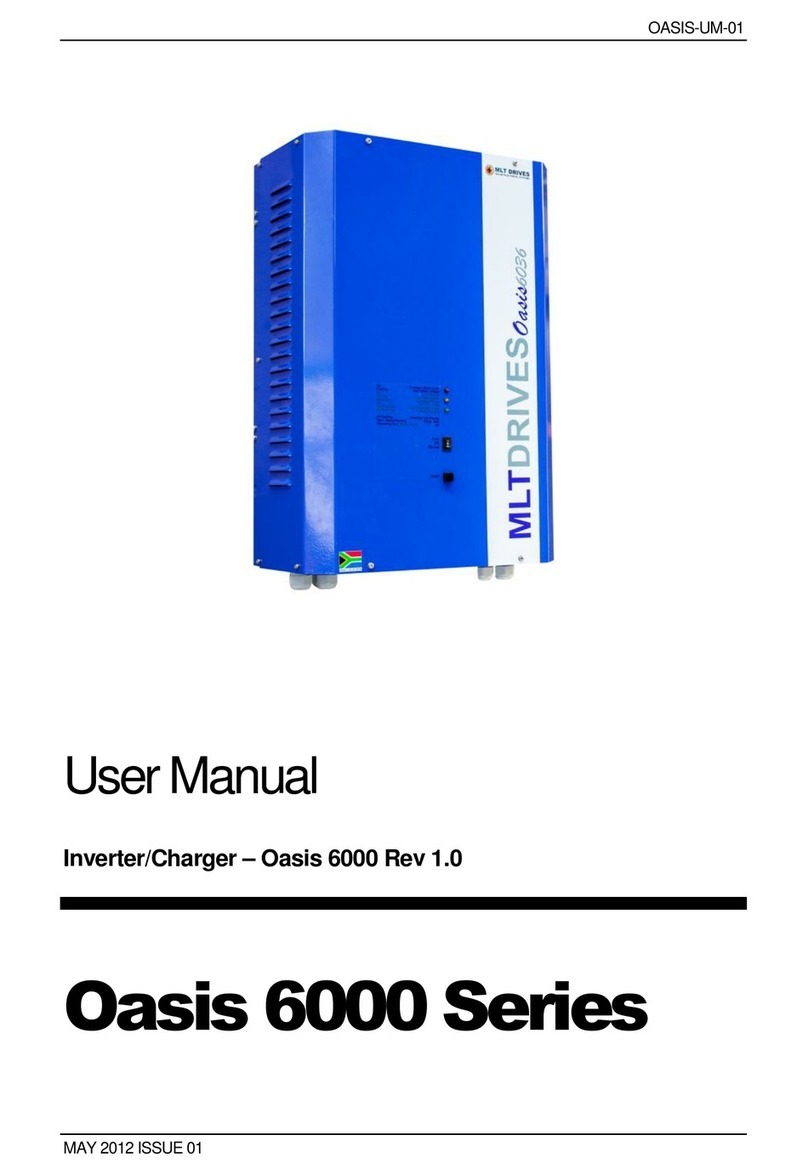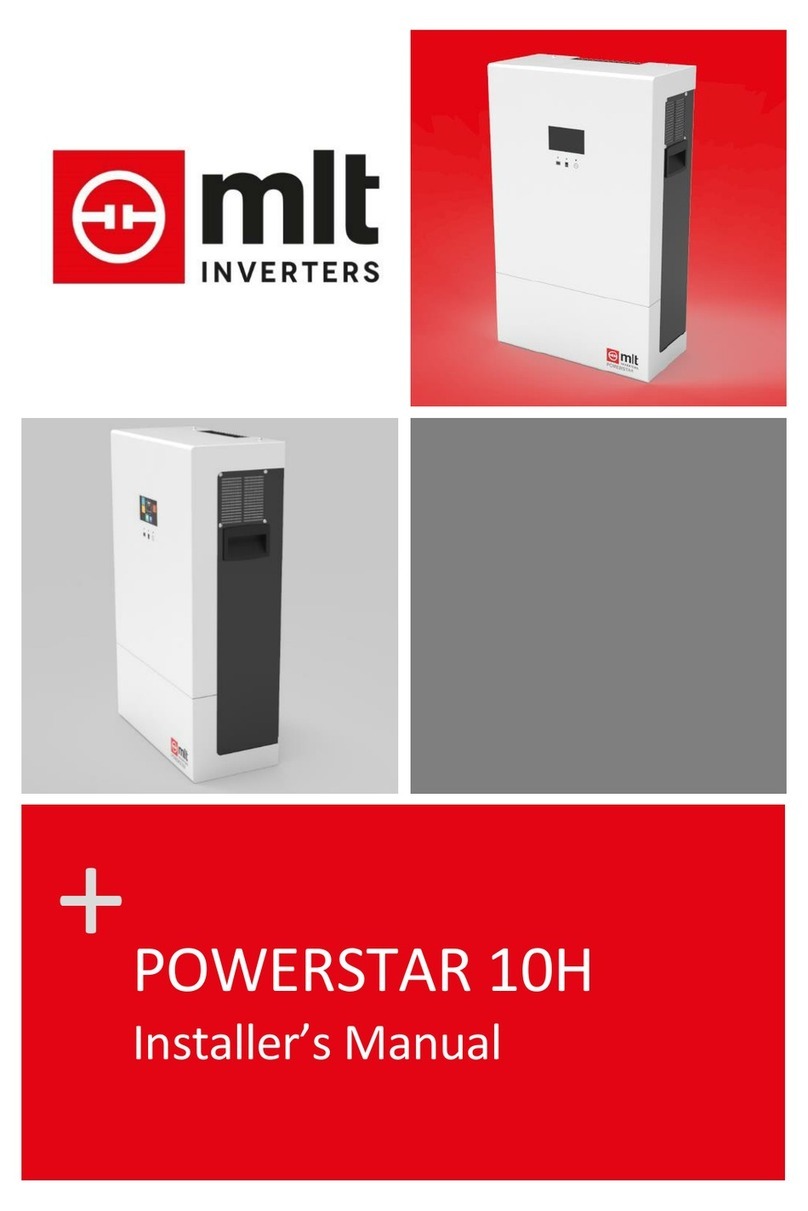2.3 Load Sense.................................................................................................................. 14
2.4 MLT Bridge Communications (Optional Add-on) ..................................................... 14
3. Mounting and Electrical Connections ...............................................................................15
3.1 Installing the Oasis inverter ....................................................................................... 15
3.1.1 Selecting a suitable location..............................................................................15
3.1.2 Mounting ........................................................................................................... 15
3.1.3 Making the electrical connections....................................................................16
3.1.4 Battery Bank Size ...............................................................................................18
3.1.5 Powering up the Oasis....................................................................................... 18
3.1.6 Powering down the Oasis ................................................................................. 19
4. Inverter Operation Indicators............................................................................................21
4.1 Inverter Status ............................................................................................................21
4.2 Battery Status ............................................................................................................. 21
4.3 Source Status..............................................................................................................21
4.4 Load Status ................................................................................................................. 21
4.5 Special Combinations.................................................................................................21
5. Interface ..............................................................................................................................22
5.1 On/Off Button ............................................................................................................ 22
5.2 System Icons............................................................................................................... 22
5.3 Dashboard .................................................................................................................. 22
5.4 Control Panel .............................................................................................................. 23
5.5 Graphing and Logs...................................................................................................... 24
5.5.1 Source Graphs....................................................................................................24
5.5.2 Load Graphs ....................................................................................................... 25
5.5.3 Battery Graphs................................................................................................... 25
5.5.4 Event logs ........................................................................................................... 26
5.5.5 Production Logs .................................................................................................28
5.6 Settings ....................................................................................................................... 29
5.6.1 Settings Menu....................................................................................................29
OASIS USER MANUAL PAGE 3































